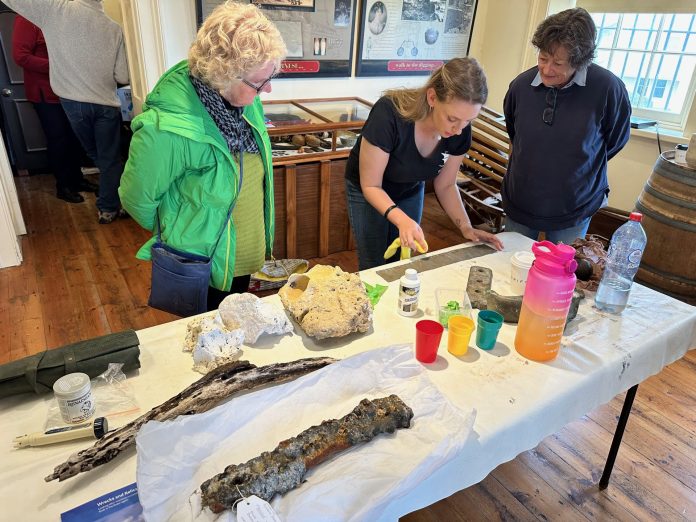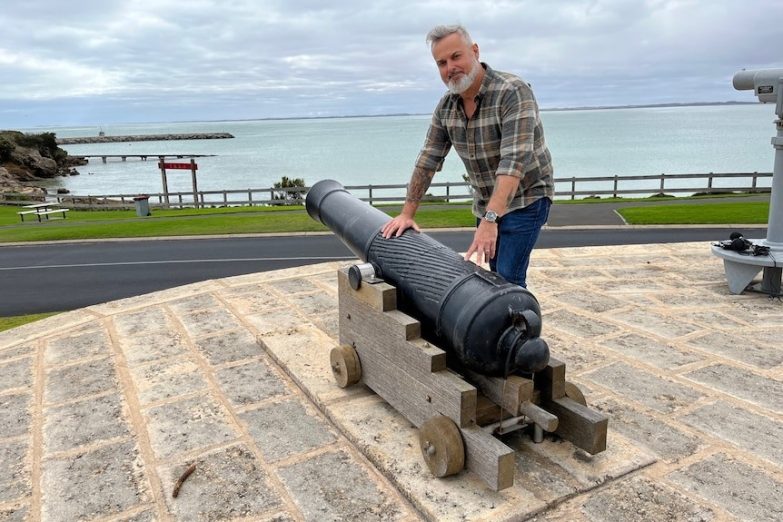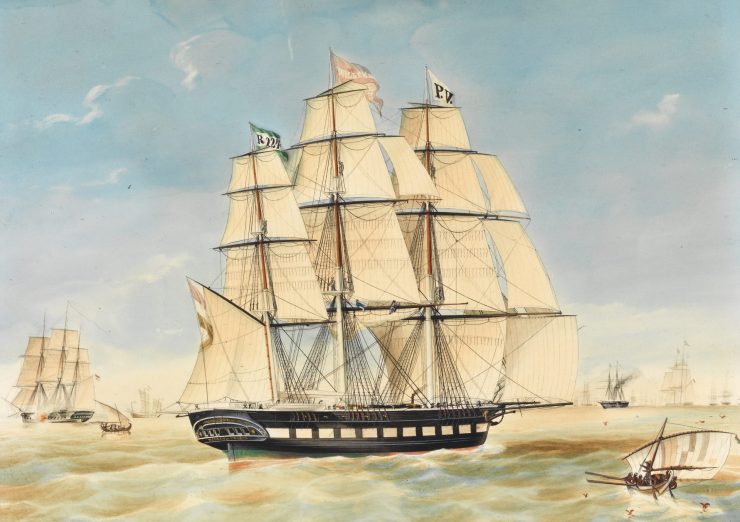The discovery of a shipwreck associated with Chinese gold-diggers landing at Robe in the 1850s has generated international media attention and excitement in the maritime heritage community. Closer to home, the project has created invaluable opportunities for National Trust volunteers and the local museum collection, writes Heritage Living editor Liz Harfull and Valerie Monaghan from the Robe Branch.
It began with an email exchange in January 2022. Dr James Hunter, now Manager of Maritime Archaeology at the Australian National Maritime Museum (ANMM) in Sydney, contacted the Robe Branch of the National Trust asking for assistance to tap into local knowledge about a shipwreck in Guichen Bay.
The museum had just been awarded a Shared Cultural Heritage Grant by the Embassy of the Kingdom of the Netherlands to locate the Koning Willem de Tweede, an 800-ton Dutch merchant sailing ship that was wrecked in June 1857. Only days before, more than 400 Chinese miners destined for the Victorian goldfields had been safely discharged from the vessel. However, at least 15 of the ship’s crew drowned during a severe southeasterly gale – the greatest recorded loss of life from any single shipwreck within the bay.
Dr Hunter explained that the project was being carried out in partnership with the Cultural Heritage Agency of the Netherlands and the Silentworld Foundation, whose maritime archaeological conservator Heather Berry was co-leader. The primary aim was to survey Guichen Bay and find the wreck site. However, funding had also been provided to document artefacts and objects held within the Robe community that might have originated from the ship, such as a cannon displayed at the Royal Circus opposite the National Trust’s Customs House Museum, and cabin doors fitted on guest rooms on the top floor of the Caledonian Inn.
Branch members and volunteers were excited to be part of this project and were soon digging through local archives to gather existing material about the wreck, as well as helping with new research to identify more information relating to the ship, its crew, the wreck and its aftermath. Dr Hunter and Ms Berry greeted each find with enthusiasm, encouraging the volunteers in their efforts.
As the project unfolded over the next three years, the team’s passion for shipwreck artefacts proved contagious. Dr Hunter willingly shared his knowledge of maritime history, helping to build understanding of the collection held at Robe. During a series of visits, he and Ms Berry presented information sessions that captured the community’s imagination and Ms Berry led workshops on preserving maritime artefacts. In April 2024, the team even released a 64-page booklet providing practical advice on caring for maritime archaeological finds at Robe. The launch was celebrated at an event in the Robe Institute attended by the Dutch Embassy’s senior policy officer of cultural affairs, Dr Xenia Hanusiak, who travelled from Canberra. She was delighted when the branch added another cultural layer to the experience by catering using Dutch recipes.
The team made their last visit to Robe in March 2025, when they were joined by Mark Polzer, who is Senior Maritime Heritage Officer with South Australia’s Department for Environment and Water, and maritime archaeology students from Flinders University. The visit provided the opportunity to examine a box of artefacts from the Duilius shipwreck (1853), donated to the branch a few months before. Each item was carefully measured, photographed and described in detail. This information has since been added to the branch catalogue. Based on their combined knowledge of maritime history, archaeology and conservation, Dr Hunter and Ms Berry were also able to provide insights into other ship-related artefacts held in the collection.
All these experiences have added phenomenally to the knowledge held within the branch, and opened the door to further training and funding opportunities. In November 2024, Valerie Monaghan attended a special five-day Museum Administrators’ Course in Sydney after successfully applying for one of just ten places. Run through the Maritime Museums of Australia Project Support Scheme, the course was funded by the Australian Government and the ANMM. Experts led sessions on topics such as designing education programs, preserving collections and creating engaging displays. Another valuable aspect of the course was building networks with ANMM managers and participants from other states.
In May, the team was finally able to announce the wreck site of the Koning Willem de Tweede had been located after poor weather and diving conditions had disrupted attempts over several years. Using a combination of marine magnetometer and underwater metal detectors, what is believed to be iron components of the ship’s windlass were found partially protruding from the seabed. Anomalies were also detected that indicate the presence of other large iron artefacts and hull components buried at the site.
The discovery generated widespread interest around the world, with stories published and broadcast by leading international news organisations and specialist publications such as the Smithsonian Magazine. Robe Branch members and volunteers shared the excitement, and the new chapter it adds to the town’s long maritime history. Importantly, the project has also left a lasting legacy of newfound knowledge and conservation skills within the community.
More information
To read more about the shipwreck discovery visit sea.museum/en/media/2025/5/shipwreck-site-of-19th-century-dutch-merchant-vessel-found.
More information about the project is also available at silentworldfoundation.org.au/projects/koning-willem/
To download a copy of the conservation booklet visit silentworldfoundation.org.au/wp-content/uploads/2025/05/robe_conservation-booklet_final.pdf






